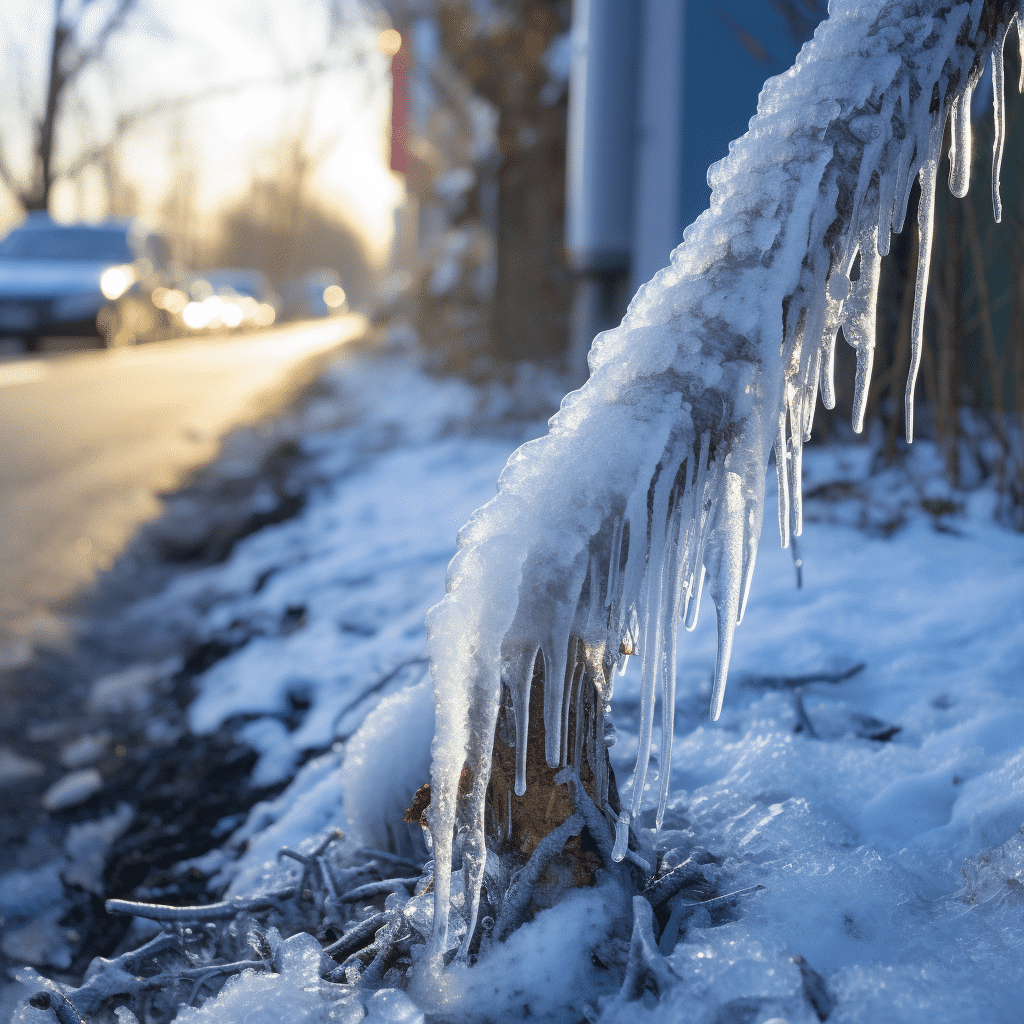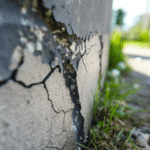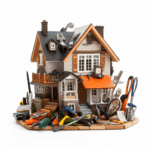Prevent Frozen Pipes, Adding insulation sleeves or heat tape creates an extra layer of protection. This is especially important for pipes in unheated areas like attics, basements, and crawlspaces. Sealing any cracks or gaps prevents cold air from getting in.
Let your faucets drip during cold weather. It might sound odd, but flowing water is less likely to freeze compared to still water. Keep cabinet doors open too, so warm air can circulate.
Mr. Johnson’s story is a reminder to take preventive measures. One winter morning, he woke up to find his house flooded due to burst pipes. The unprotected plumbing lines had frozen overnight, causing extensive damage and hefty repair costs.
Table of Contents
Understanding the risks of frozen pipes
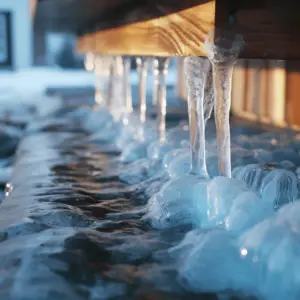
Water expands when it freezes—inside pipes, this can cause them to burst. Exterior walls and unheated places are at higher risk, as is insufficient insulation. Cold snaps and extreme weather worsen the situation. Slow or no water flow could be an early sign. Older plumbing systems face higher risks than newer ones.
Ventilate the areas where pipes are located and keep interior temperatures steady when away from home. Use heat tape or pipe sleeves for extra protection. Be aware of these risks and take preventative measures. Frozen and burst pipes cost homeowners millions annually. Stay proactive and protect plumbing from freezing temperatures’ consequences.
Precautionary measures to prevent frozen pipes
Prevent Frozen Pipes, Precautions are important to avoid freezing pipes and have a working plumbing system in colder months. Here are 6 steps to secure your pipes:
- Cover exterior pipes and taps with foam insulation to protect them from low temperatures.
- Put heat tape or cables right on water pipes for constant heat and avoid freezing.
- Close any holes or gaps in walls or foundations near the pipes, as cold air can get in and freeze them.
- Detach hoses from outdoor faucets and empty them fully before putting away for winter.
- Keep cabinet doors open in kitchens and bathrooms to allow warm air around interior pipes.
- Allow the faucets to drip slightly if the temperature drops a lot overnight.
Moreover, remember to shut off exterior water sources, such as supply lines for sprinklers or pools. By emptying those lines, you stop the water from freezing inside the pipes and causing damage.
It’s amazing how people in old civilizations prevented their pipes from freezing. In ancient Rome, for example, wealthy people used creative techniques like covering their plumbing with animal skins or blankets, which kept their water unfrozen even in tough winters. This shows how humans have always tried to deal with extreme weather conditions.
Signs of frozen pipes
If you turn on a faucet and there’s little or no water, it might mean the pipe’s frozen. Or, if you hear loud banging, cracking, or popping sounds, this could be a sign of frozen water inside them expanding. You can also look for frost or ice buildup on visible pipes – it’s a clear indication they’re frozen and could burst.
Plus, if only certain faucets have low water flow and others don’t, this could mean specific pipes are frozen, not the whole plumbing system. Additionally, be aware of any unusual smells or leaks around pipes – they can be further signs of freezing.
To stop your pipes from freezing:
- Insulate walls and attics to keep temperatures warm.
- Let faucets drip slightly in cold temperatures.
- Inspect for gaps or cracks near exterior walls/pipes and seal them with caulk or foam.
These steps provide protection for your pipes – insulation keeps temperatures stable, dripping relieves pressure, and sealing gaps stops cold air drafts. Taking these measures will help your plumbing system in cold weather.
Thawing frozen pipes
When pipes freeze, serious damage can happen to your plumbing system. To avoid this, thaw frozen pipes carefully. Here is a guide to do it:
- Find the frozen pipe. Identify where it is frozen. That way, you can concentrate your efforts there.
- Turn on the faucet attached to the frozen pipe. This will let out any pressure in the system.
- Use a hairdryer, heat lamp, or electric heating pad to gently warm the frozen part of the pipe. Start at the faucet end and move towards the blockage.
- Never use an open flame like a blowtorch or propane heater. It can damage your pipes and cause a fire.
- When you’ve successfully thawed the pipe, check if water flows freely before turning off the faucet.
When thawing frozen pipes, remember:
- Patience is key. Thawing takes time. Don’t rush it or use too much heat.
- Insulate exposed pipes in unheated areas of your home.
- If you need help, consult a plumber.
The Insurance Information Institute (III) says burst water pipes are one of the most common causes of property damage in cold weather. So it’s important to know how to thaw them safely.
Preventing future pipe freezing
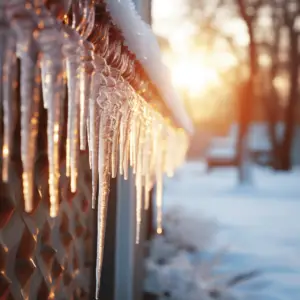
I. Avoiding freezing pipes in future:
Wrap pipes with insulation, seal air leaks, keep thermostat steady, let faucets drip in cold weather, and open cabinet doors for warm air – to stop pipes from freezing.
II. 5-Step Guide:
- Insulate: Cover pipes with foam insulation.
- Seal: Use caulk or weatherstripping to close up cracks or gaps in walls, floors and windows.
- Maintain: Keep the thermostat at a temperature above freezing.
- Drip Faucets: Let faucets drip slightly when it’s cold.
- Open Cabinet Doors: Open cabinet doors below sinks so warm air can reach pipes.
III. Unique steps:
Insulate garages and crawl spaces with exposed pipes.
IV. More ideas:
Install heat tape or cable on exposed pipes, as they provide warmth through electrical resistance. Also, drain outdoor hoses before winter to prevent water from expanding and causing damage.
Conclusion
Stop frozen pipes with insulation. Keep your home warm and let faucets drip in chilly temps. Seal any cracks or gaps in walls and foundations to keep out cold air. These steps will help keep pipes warm and stop them from freezing. Be proactive and keep your pipes functioning in winter!
Frequently Asked Questions
FAQs: How do I prevent my pipes from freezing?
1. Q: Why do pipes freeze?
A: Pipes freeze when the temperature falls below freezing point, causing the water inside to turn into ice. This can lead to pipes cracking or bursting.
2. Q: How can I insulate my pipes?
A: To insulate your pipes, you can use foam pipe insulation sleeves or heat tape. These materials help retain heat and prevent freezing. It’s also important to seal any gaps or cracks near the pipes to keep cold air out.
3. Q: Should I leave faucets dripping during cold weather?
A: Yes, leaving faucets slightly open to allow a small drip can help prevent pipes from freezing. The flowing water reduces the pressure inside the pipes and lowers the chances of freezing.
4. Q: What temperature should I set my thermostat to?
A: During cold weather, it’s recommended to set your thermostat to a minimum of 55 degrees Fahrenheit (12 degrees Celsius) to prevent pipes from freezing. This temperature is warm enough to keep the pipes above freezing point.
5. Q: How can I heat specific areas where pipes are at risk?
A: You can use space heaters or heating cables specifically designed for pipes. These can be placed near exposed or vulnerable pipes to provide extra heat and prevent freezing.
6. Q: What should I do if my pipes are already frozen?
A: If your pipes are frozen, you should turn off the water supply to prevent further damage. You can then apply gentle heat using a hairdryer or towels soaked in warm water to thaw the pipes slowly. It’s best to contact a professional plumber to assist with the process.
